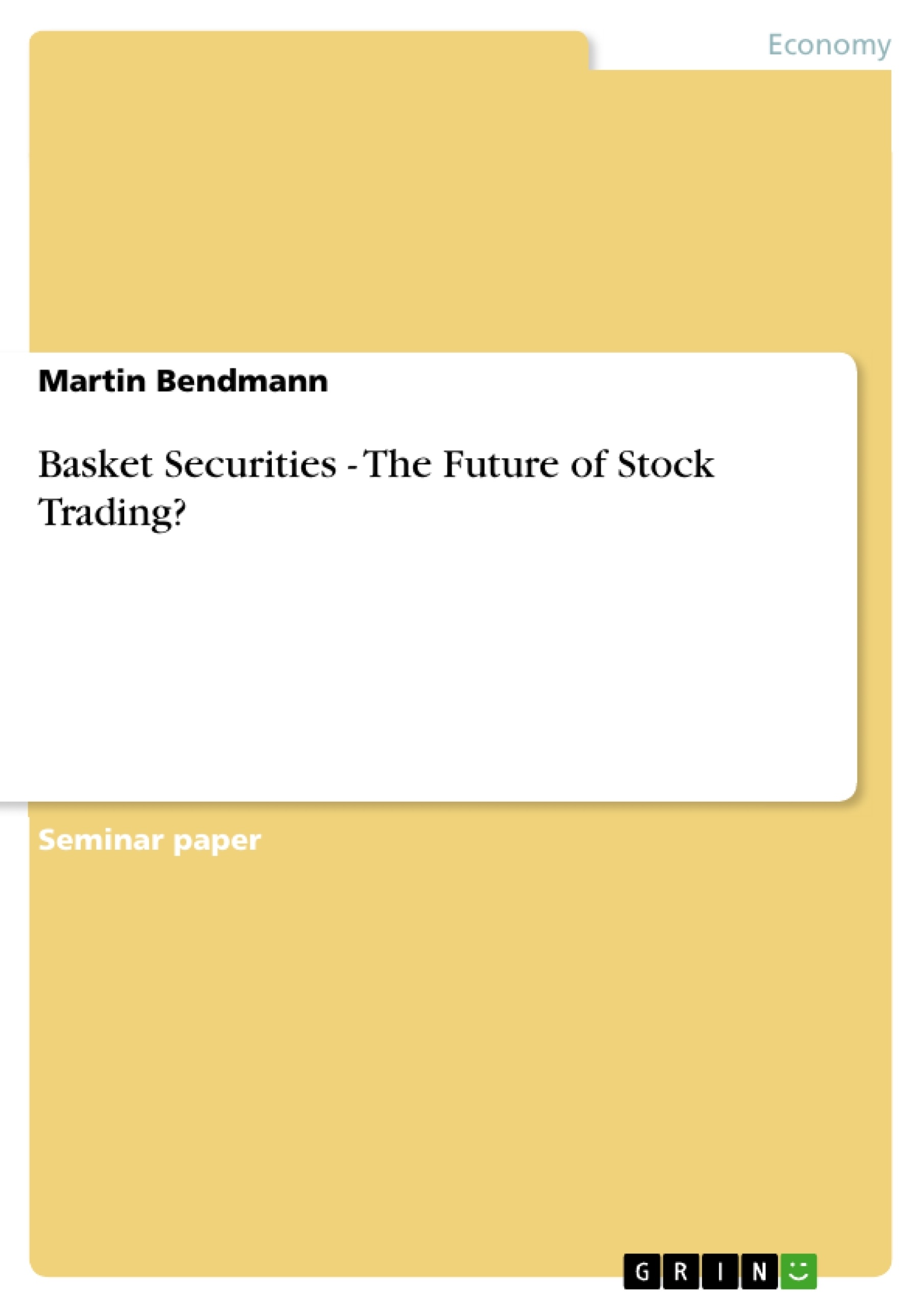Harry M. Markowitz developed the most renowned capital market theory of the last century, for which he received the Nobel Prize in 1990, the “Modern Portfolio Theory”, which can be seen as the basis for basket securities. He recommended investments in diversified portfolios in order to reduce risk.1Especially institutional investors started to trade large diversified bundles of shares in order to construct efficient portfolios. Soon they recognized, that they need to find an alternative with lower transaction costs and lower potential to destabilize the market than the conventional program trading.2Trading baskets that include all stocks, with narrow spreads and liquid markets, appeared to be a solution.
As a result at the beginning of the 70s the first index funds were issued in the USA, based on the assumption, that actively managed funds are not able to outperform the market in the long term.
Those funds are intended to avoid the costs of program trading that occurred every trade and meet the needs and expectations of the investors. Due to the instant success, several instruments were created. In the following pages I will point out how an ideal basket vehicle should be designed and afterwards examine some of the most popular basket securities concerning the question how good they meet their target of replicating their underlying index and at which price.
Table of Contents
- 1. Introduction
- 2. Definition Basket Securities
- 3. The ideal basket vehicle
- 4. Types of Basket Securities
- 4.1 Mutual Index Funds
- 4.2 Stock Index Futures
- 4.3 Exchange traded funds
- 4.3.1 Standard & Poor's Depository receipts
- 4.4 Participations
- 4.4.1 Participation Units
- 4.4.2 Discount Participations
- 4.5 Program Trading
- 5. Conclusion + Outlook
- 6. References
Objectives and Key Themes
This text explores the evolution and characteristics of basket securities as an alternative to traditional stock trading. It examines the concept of diversification, efficiency, and cost reduction in portfolio management. The text aims to provide a comprehensive understanding of the different types of basket securities available and their strengths and limitations.
- Diversification and Risk Reduction
- Efficient Portfolio Management
- Cost Reduction in Trading
- Replication Efficiency of Basket Securities
- The Ideal Basket Vehicle
Chapter Summaries
- 1. Introduction: This chapter introduces the concept of basket securities, referencing the work of Harry M. Markowitz and his "Modern Portfolio Theory." It highlights the need for diversification and cost-effective alternatives to traditional program trading.
- 2. Definition Basket Securities: This chapter defines basket securities as a diversified investment strategy that involves buying or selling a weighted quantity of stocks within a specific region or industry. It explains the benefits of this approach in terms of risk reduction and ease of trading.
- 3. The ideal basket vehicle: This chapter outlines the key characteristics of an ideal basket vehicle, emphasizing factors like low tracking error, continuous trading, and minimal cost implications.
- 4. Types of Basket Securities: This chapter explores various types of basket securities, including mutual index funds, stock index futures, exchange-traded funds, and program trading, delving into their specific features and strengths.
- 4.1 Mutual Index Funds: This section examines the characteristics of open-end and closed-end mutual index funds, highlighting their potential for cost reduction and the challenges related to execution and price risk.
Keywords
This text focuses on the key concepts of basket securities, portfolio diversification, risk reduction, and cost-effective trading strategies. It explores different types of basket securities, including mutual index funds, exchange-traded funds, stock index futures, and program trading, highlighting their strengths and limitations.
- Arbeit zitieren
- Martin Bendmann (Autor:in), 2006, Basket Securities - The Future of Stock Trading?, München, GRIN Verlag, https://www.grin.com/document/50386



